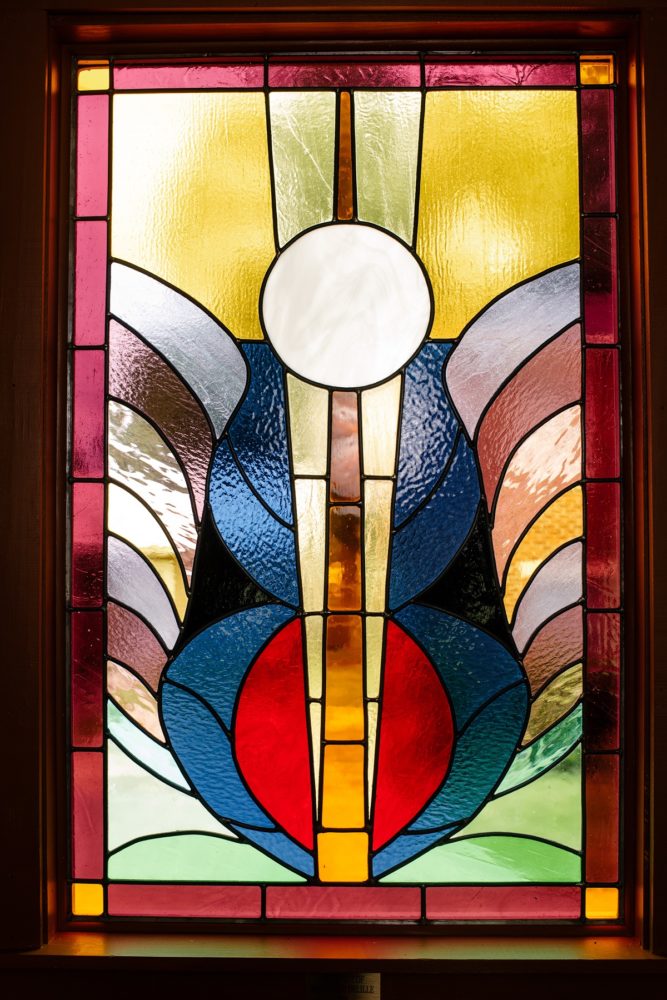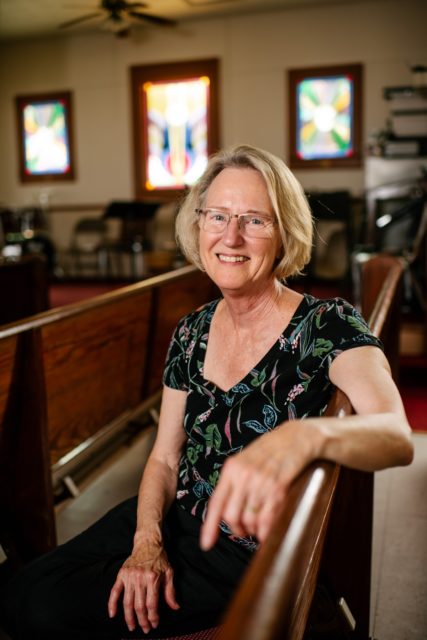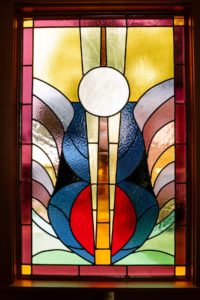Stained Glass, Geodes, and Fossils
The multimedia art of Karen Bourque
Published: March 1, 2020
Last Updated: June 1, 2023

Photo by Paul Kieu
Bourque's Henriette DeLille-inspired glasswork.
Bourque did not start her career as an artist; she worked for thirty years in clinical medical laboratories as a medical technologist before retiring and turning to the world of stained glass. Before she retired, she had taken a six-week stained-glass workshop with artist Dave Temple and turned out a piece that pleased her. On a subsequent trip to Chicago she saw a work that not only contained glass but also incorporated a geode, and she knew she had found what she wanted to do. Since then, the inclusion of geodes, fossils, and rocks along with the stained glass has become a recognizable signature of her work.
Bourque’s studio is a renovated sharecropper’s house moved from “down the road” to its place across the courtyard from her home in Church Point. Here she creates an initial design, then shops for color and texture; glass usually comes from the Absolut Art Glass Studio in Lafayette, and the geodes come primarily from the Rock and Gem Show in Tucson, Arizona. Once she chooses her glass, she transfers the design, scores the glass with a diamond cutting implement, and breaks it into pieces.
Asked why she chooses to work with abstract designs, she responded that they make the viewer think more deeply about the piece than representational ones. Her choice grows directly from her search for the connection of earth’s forces to the spiritual world. As she said, natural elements such as geodes and fossils “anchor us to the earth, and their beauty connects us to our soul.”
Symbolism underlies the visual presentation of Bourque’s art. In the church in Bellevue, for example, the central panel suggests the image of Henriette DeLille, a nineteenth-century free woman of color who founded the Sisters of the Holy Family in New Orleans, cared for orphans and the sick, and taught enslaved people when Louisiana’s law prohibited their education. Bourque explained that in her glass, “[DeLille] is rooted to the green earth with colorful wings carrying her up to heaven. The color red symbolizes Henriette’s heart and its capacity for transcendent love.” She continued, “The design can also be seen as the image of the Trinity. The suggestion of Host and chalice in the center represents Christ. The golden rays from above represent God the Father, and the pastel rays suggest the Holy Spirit. The red symbolizes both Christ’s sacrificial blood and his love for everything his Father created.”
Bourque’s stained glass, which these days is mostly commissioned work, can be viewed at the Ernest J. Gaines Center at the University of Louisiana at Lafayette and at the Louisiana State Library in Baton Rouge. Whether a piece is designed for a public space or a private home, she works to incorporate something personal that gives the patron spiritual inspiration. As Bourque said, “The artwork then becomes a reflection of the soul, allowing appreciation of the various ways we inhabit our humanity.”
Ann B. Dobie is professor emerita of English at the University of Louisiana at Lafayette and former director of the Louisiana Writing Project. As a writer of non-fiction, she is particularly interested in the work of Louisiana artists and writers.

